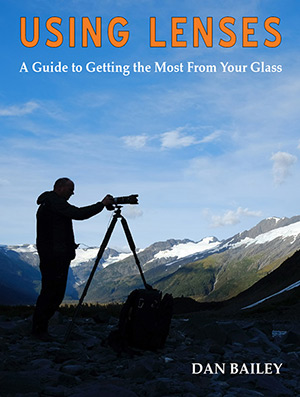If you’ve been a stock photographer for any length of time, there’s a good chance that one or more of your agencies has been bought out by Getty Images and you’ve received the following notice:
Welcome to Getty Images!
Actually, for being involved in the stock photo industry for eighteen years, I’m honestly surprised that it took them so long to find me. I’ve survived acquisitions by Index Stock, Veer, Photolibrary and Corbis, but it wasn’t until Getty bought Photolibrary last month that I finally ended up with The Big G. I’m not sure if I should feel honored or if I should feel like some kind of frightened, endangered animal who’s finally been snared by the trap.
And so, like so many of you, I now join a large family of confused photographers who continually wonder if they should jump ship and escape from the clutches of Getty Images, or if they should sign (or stay) with the company and hope for the best. Its no surprise that most photographers, and the entire industry as a whole for that matter, have a love-hate relationship with Getty.
The Love
Getty sells a lot of stock photos. Having bought up nearly every agency that Corbis didn’t get first, they’re the biggest agency around. Remember Tony Stone, The Image Bank and Comstock? All Getty brands now. Allsport and Jupiter Images? Yep. Getty. The company has enormous marketing power and a vast catalog of content. And with the subscription deals that they keep writing with companies like Time Warner and Flickr, they make it even easier for clients to license their images.
The truth is that Getty actually make decent money for their more prolific rights managed photographers. Through their RF microstock channels like iStockphoto, they make money for some of the smaller time shooters as well. One of my former editors has always encouraged me to try to get in with Getty, simply because in her opinion, they make the most money for photographers who shoot stock.
I always resisted, because of…
The Hate
It’s no secret that the mere mention of the word Getty brings a foul taste to the mouth of many a photographer. Why? Because in many people’s minds, their drive to make as much money and profit as possible is devaluating and destroying the photographic landscape as we know it.

Download My Free Photography eBook
Let me show you some techniques that will help make you a better, more proficient and more creative photographer!
In their quest to sell the most photos, the company routinely licenses images at prices that are well below market value. For example, two years ago, they licensed an iStockphoto image to Time Magazine for cover use for a mere $30. When I pull that kind of usage up in FotoQuote, (cover, consumer mag, 1-3 mil circ.) I see a figure of $1,926.
Why on earth would a company with that kind of market power lowball prices so badly? Honestly, I’m not sure. I have my speculations. Most likely it’s because the company seeks the biggest market share in the entire industry and their method of doing this revolvers around sheer volume. Hmmm… sounds a bit like Wal Mart, don’t you think?
It’s no wonder that these practices, along with the agency’s latest contributor contract terms has ASMP advising “Getty contributors to quit the agency and find other ways to distribute their stock photographs.”
The Reality
Much like the now gone dot.com boom of the 90’s, we’re never going to return to the so called Golden Days of Stock Photography. Sorry. Not gonna happen. It’s simple economics. The industry has changed. The market is saturated with images and internet e-commerce makes it possible for anyone to sell stock photos.
Also, every agency has extensive distribution deals with as many channels as possible in order to maximize exposure. What this means is that once you place images with an agency, they can potentially be licensed by just about every other agency. Some of my Corbis Images show up as Veer images on Getty. My Veer images show up on Corbis, Photolibrary and Getty and my Alaksa Stock, Photolibrary and Corbis images all show up on Alamy.
So, in the end, does it really matter who you’re with? In some sense it does, because that’s who’s contract you end up signing. Getty’s contract is certainly not ideal, especially their new terms that state that they can freely move images that haven’t licensed images for three years into RF and microstock.
I don’t know about you, but I see sales all the time from older images. That’s how stock photography works, especially if you take care to shoot images that don’t look dated too quickly. So, that particular term could definitely be considered a deal-breaker for many.
Should You Bail?
Ah, the tough question, indeed. If you’re a Photolibrary contributor, should you sign the Getty contract and join the family, or should you bail? Or maybe you’re a fed up Getty photographer. Should you stay? Am I going to sign the Getty contract or just let my Photolibrary contract run out and eventually drop from the rolls?
I’m not sure yet, but let’s look at the reality of both options.
What happens if you bail? Suppose you have a few thousand images with Photolibrary, or with Getty. Terminating means that they fall out of the channel. How long would it take you to get them resubmitted to another agency, and how many of them would actually get taken by another agency? Maybe 10-20%. 30% if you’re lucky. Certainly no more than 50%. That’s a large number of potentially sellable images that are out of the marketplace
Of course, you could take them all and set up your own searchable stock website. This takes time and effort, but it’s possible and at least something to consider, depending on what you shoot, how you market and what kind of website model you plan to set up.
What happens if you sign or stay? You get (or retain) access to Getty’s enormous marketing arm and have the potential to make some more money off of those images. Of course, how much you stand to make, if any, is subject to compete speculation at this point. It’s safe to say that you’ll probably make at least some money, certainly more than you would if you didn’t sign.
That said, will you be able to stand seeing some very small commission rates on your statements? Will you be able to stand the pain of seeing your imagery devaluated to the level of mircostock subscription photography? What if you make a few hundred or a few thousand dollars per quarter, but most of the sales are less than ten dollars? Less than one dollar?
My Decision
I haven’t made it yet. However, in addition to the many factors above, two things have me leaning towards signing. The first is sheer curiosity. Like I said, I’ve been involved in stock photography for almost twenty years and after all that time, I finally got scooped up by Getty. Out of sheer professional interest and experience, I’m curious to at least see what they’re like from a contributor standpoint. After all this time, it would almost be a shame not to, right?
Also, it means that I’ll finally have in inside perspective from which to write about. It means that I can better educate you with firsthand knowledge when I write about the stock photo industry here on my blog and on The Photoletariat. That’s worth something to me, hopefully I can make it worth your while as well, and in the meantime, spare you any possible agony. It will be like me taking one for the team.
The second reason that I may go ahead and sign is based on what I said above. I have over a thousand images with Photolibrary and I don’t it would be in my best interested to just pull them all out of the channel. I could sign, give it some time and see how those do before sending them any more submissions, if ever.
And hopefully in the meantime, one of three things will happen; hopefully all of them. One, ASMP’s continuous efforts will influence Getty to write a better contract. Two, with the economy in revival, the overall valuation of stock imagery will start to climb out of the gutter. Three, through websites, blogs, SEO efforts, and photo sharing sites, photo buyers will continue to seek out high quality imagery direct from photographers instead of from agencies that they feel don’t often feel offer the best selection, which means that we won’t have to rely on companies like Getty in the future.
One and two? Not holding my breath. Three. It’s already happening.
As always, I’d love to hear your comments on this issue.




Let me know when you reach a decision, in the same boat coming from IndexStock via PhotoLibrary. I’ve been approached by Getty before, but it’s always fallen on the negative side of the see-saw. Something to do with 20% and the downward push… I’ve said for a long while that photographers themselves are part of the reason our industry is in the state it’s in. As a pack, we won’t say no to a bad deal, and Getty’s been know for serving up on a silver platter and photographers swallow it. I don’t want to say no, but I still hate the idea of saying yes. (Still leaning toward no.)
Hi, Dan. Thanks for your article. I’ll be staying tuned about your decision and about what happens after.
[…] traverse in Rocky Mountain National Park, Colorado. Remember what I said the other day about in my Getty post about the lifespan of stock photos? This shot is way more than three years old, in fact Patagonia […]
Like I said, Gary, my decision may revolve largely around professional curiosity and giving me an educated position for writing further articles on the matter. If that weren’t a factor, the choice might be more difficult. Getty does make money for photographers, but you’re right, overall, the business model is not nearly as desirable as we’d like it to be. That’s why we keep saying yes- we don’t want to say yes, but being the number one agency, it’s just as hard to say no. I’ll keep you posted.
[…] A few months ago, when Getty Images bought Photolibrary, I was faced with the decision to either sign with Getty or let my Photolibrary contract lapse. You can read my post to see the for and against issues that I considered: Will I Sign With Getty Images? Should You? […]